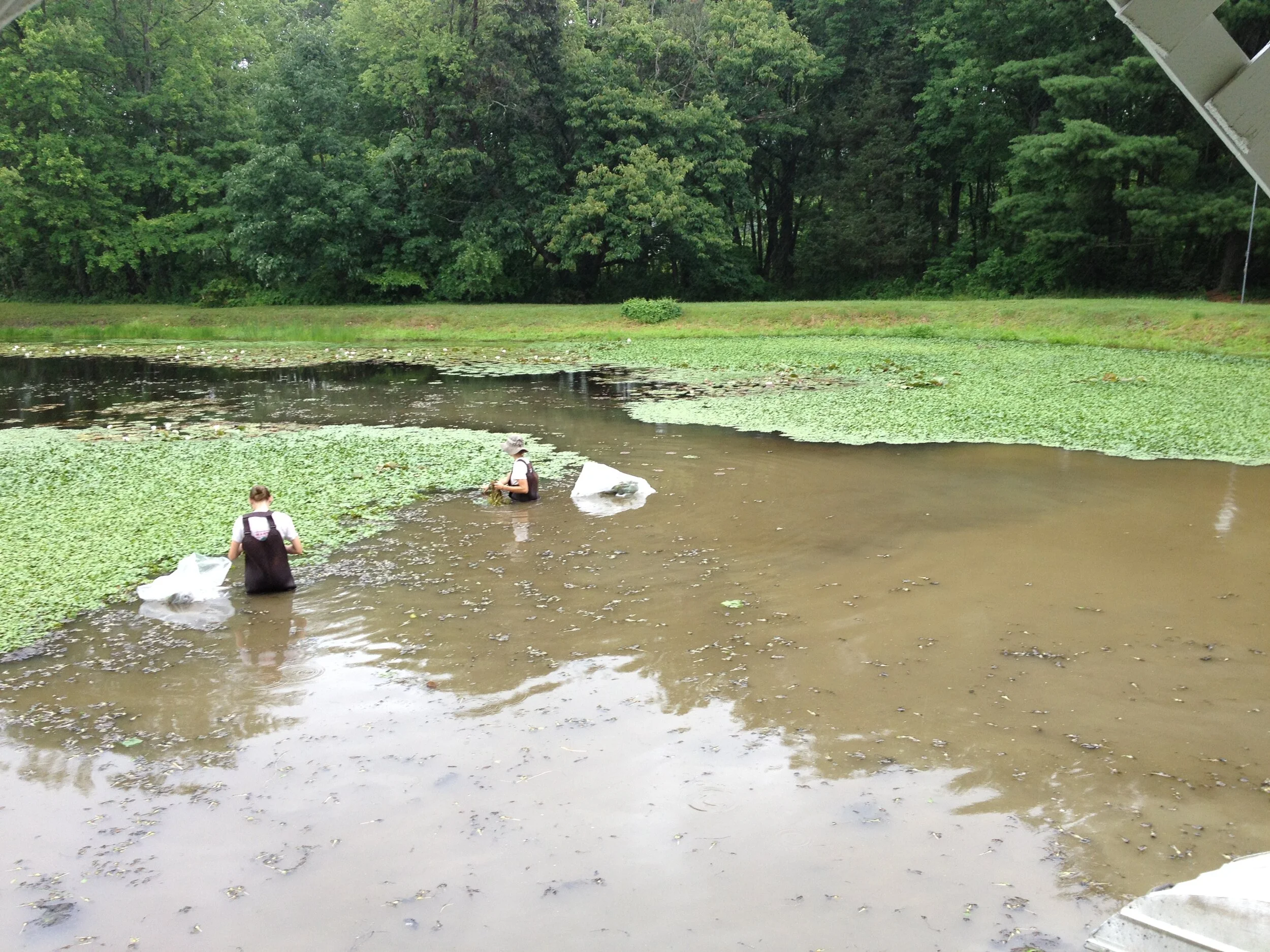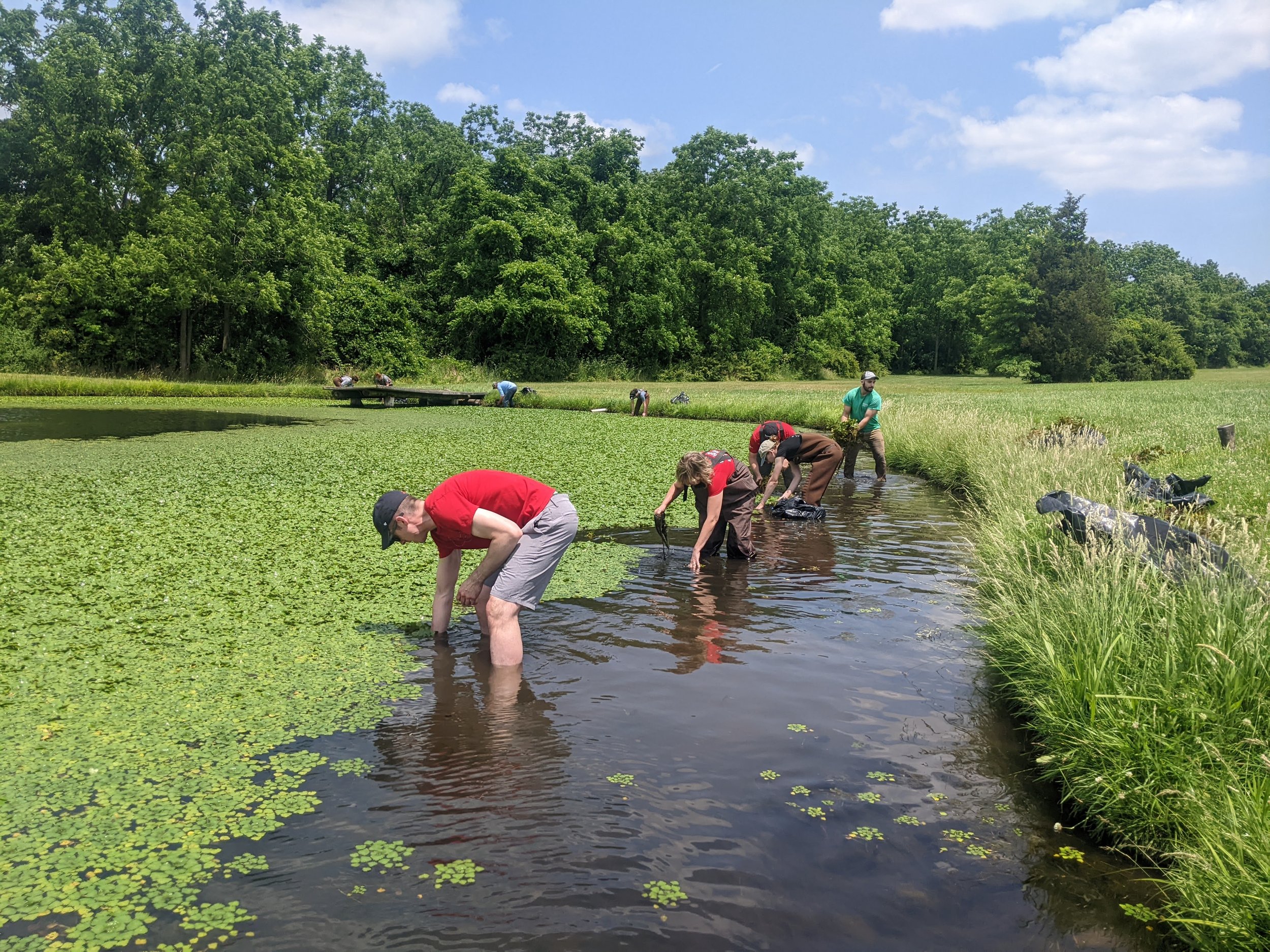What is European Water Chestnut?
European Water Chestnut (EWC) is an aquatic, invasive plant species consisting of a floating rosette with triangular shaped leaves. A single plant can produce multiple rosettes which create a dense mat on the surface of creeks, lakes, ponds or other slow moving waterways. EWC can grow in water up to 15 ft. deep, and has long, submerged stems with fringe-like leaves. Water chestnut is an annual plant that emerges in early May, and produces small white flowers atop its rosettes from June - July. In mid to late summer, sharp, barbed seed pods appear underneath the rosettes and along the stem of the plant. These seed pods drop into the substrate of the water body from August - September, where they can remain dormant for up to 12 years. Additionally, a single seed pod can produce up to 20 plants and each plant can produce up to 20 seeds!
European water chestnut was introduced to the U.S. in the 1800's from Eastern Europe. Watersheds, such as Lake Champlain and the Potomac River, have been managing the species for over 70 years, spending millions of dollars annually. The plant was first discovered in the Perkiomen Creek watershed in 2007 and the Conservancy has been successfully managing infestations since 2009. There are currently 10 known infestations affecting 7 different waterways within our watershed.
What are the effects of European water chestnut?
European water chestnut is a non-native, invasive species, meaning that it does not naturally occur in this area. Water chestnut, like many other non-native species, has no natural predators in its introduced range, allowing it to spread rapidly and making control very difficult. On top of that, EWC management is particularly challenging because it grows quickly over a large area, the seeds can survive for up to 12 years and each plant produces about 20 seeds each year. As a result, this invasive species has the potential to cause economic and environmental harm and can even lead to public safety concerns.
European water chestnut must be managed to protect the local environment and to preserve our outdoor recreation spaces. In addition to out-completing native aquatic vegetation, European water chestnut can deplete aquatic systems of oxygen and reduce sunlight. The plant also makes recreational activities difficult and/or dangerous. When boating, the plant may get caught on paddles and rudders making it more challenging to travel through. Large mats of European water chestnut also can also impede fishing. Waterways infested with European water chestnut are dangerous and unpleasant to swim in, as the tangle of matted vegetation is hard to navigate and the sharp seeds can get stuck in clothing or pierce skin.
Bergey’s Pond EWC infestation - 2022
Hand-pulling EWC at Bergey’s Pond - 2023
Bergey’s Pond EWC infestation - June 2024
EWC removed during volunteer workday - 2024
Bergey’s Pond EWC infestation - August 2024
Bergey’s Pond Infestation - May 2025
what can you do to help?
Help reduce and prevent the spread of water chestnut by not transporting seed pods to new waterways while recreating. When boating, fishing, swimming, and enjoying other recreation activities, avoid areas with European water chestnut to reduce the risk of capturing seeds and plant materials on your belongings. Be sure to look for and remove any pieces of the plant or seeds from boats and other equipment and always clean and dry equipment before its next use if evidence of water chestnut is found.
You can also volunteer to help the Conservancy succeed in hand-pulling this invasive aquatic plant from local waterways through our European Water Chestnut Removal Project! The Conservancy hosts a variety of water chestnut removal work days from May to August each year. Think you might have seen European water chestnut locally? Please alert the Conservancy by reporting the infestation to us!









